
This is my full review of the new iQOO Neo 7, which is the company’s latest midrange phone. And if we know one thing about iQOO, it’s that the company makes solid gaming phones and this guy is no exception. Even just by looking at some of its specs like the Dimensity 8200 processor and the 3D cooling system, you can tell that the iQOO Neo 7 kills it in the gaming arena.
But as the smartphone industry continues to evolve, gaming phones have bigger shoes to fill as well.
And people have come to expect good—if not as equally good—experience from a gaming phone in other aspects like cameras, display, and battery as well. So I was really curious to find out if the iQOO Neo 7 is also a balanced midrange phone that even someone who is not a gamer should look into. And spoiler alert, except for a few compromises here and there, this is actually a pretty well-rounded phone overall.
iQOO Neo 7 Review: Specifications
- Body: 76.9 x 164.8 x 8.6mm, 193 grams, Plastic back/frames, No IP rating
- Display: 6.78-inch AMOLED panel, 120Hz refresh rate, Up to 1200Hz touch sampling rate, Schott Xensation glass, SGS Eye Care
- Other Properties: 800 nits (HBM), 1300 nits (HDR) brightness, HDR10+
- Resolution: Full HD (2400 x 1080 pixels), 388 PPI, 20:9 aspect ratio,
- Chipset: MediaTek Dimensity 8200 5G (4nm mobile platform)
- CPU: Octa-core:
– 1x Cortex-A78 (3.1 GHz)– 3x Cortex-A78 (3.0 GHz)
– 4x Cortex-A55 (2.0 GHz) - GPU: Arm Mali-G610 MC6
- Memory: 8/12GB LPDDR5 RAM, 128/256GB UFS 3.1 storage (fixed)
- Software & UI: Android 13 with Vivo’s Funtouch OS 13 on top
- Rear Camera: Triple (with LED flash)
– 64MP, f/1.79 Samsung ISOCELL GW3, 1/1.97″ sensor, OIS
– 2MP, f/2.4 depth sensor
– 2MP, f/2.4 macro sensor - Front Camera: 16MP, f/2.4 (hole-punch cutout)
- Audio: Built-in stereo speakers, Hi-Res Audio, No 3.5mm headphone jack
- Security: In-display fingerprint sensor (optical)
- Sensors: Accelerometer, Ambient light, E-compass, Infrared, Gyroscope, Proximity
- Connectivity: Dual-SIM (Nano), WiFi 5 a/b/g/n/ac (Dual-band), Bluetooth 5.3, GPS / Glonass / Galileo / BeiDou / NavIC / GNSS / QZSS, 4G LTE (VoLTE), 5G
- Battery: 5000mAh with 120W FlashCharge (120W adapter provided)
- Color Options: Frost Blue, Interstellar Black
- What’s Inside The Box: iQOO Neo 7, USB-C to USB-C cable, 120W power adapter, USB-C to 3.5mm jack adapter, Clear case, SIM ejector tool, User manual and other documents
- Price in Nepal: N/A (Starts at INR 29,999 in India for 8/128GB)
iQOO Neo 7 Review:
Before we move forward, let me clear up something real quick. So like how iQOO rebranded the China-exclusive Neo 6 SE as Neo 6 for the global market last year, the iQOO Neo 7 shares the same story. The global variant of this phone—which is the one I have—is powered by MediaTek’s Dimensity 8200 chip versus a more powerful Dimensity 9000+ on the Chinese model. Apart from this, there are a few more differences in the display and camera departments as well.
Performance
- Octa-core MediaTek Dimensity 8200 5G SoC (4nm)
- 8/12GB LPDDR5 RAM, 128/256GB UFS 3.1 storage (fixed)
- Android 13 with Funtouch OS 13 on top
- 2 years of OS, 3 years of guaranteed security updates
Anyway, let’s now talk about the star of the show, which is the processor itself. The Neo 7’s Dimensity 8200 is a small upgrade over the Dimensity 8100—yes—but still an impressive one. And the most important upgrade of them all has to be its 4nm fabrication process, besides the overclocked CPU and GPU, and everything else.
| Dimensity 8100 | Dimensity 8200 | |
| Process | TSMC 5nm (N5) | TSMC 4nm (N4) |
| CPU | 4x Cortex-A78 (2.85 GHz) | 1x Cortex-A78 (3.1 GHz) |
| 4x Cortex-A55 (2.0 GHz) | 3x Cortex-A78 (3.0 GHz) | |
| 4x Cortex-A55 (2.0 GHz) | ||
| GPU | Mali-G610 MC6 (860 MHz) | Mali-G610 MC6 (950 MHz) |
I think MediaTek could’ve shaped this chip even prettier by going with the new Armv9 architecture and TSMC’s second-gen 4nm process though. But for what it’s worth, the 8200 is an absolute powerhouse.
Be it CPU or GPU, this MediaTek chip scores higher in every benchmark out there, against practically every chip you’d find in this price segment. In fact, its performance level is actually similar to the Snapdragon 888, but you know… with much better thermal efficiency.
A proper gaming powerhouse
So this shouldn’t come as a surprise when I say that the iQOO Neo 7 is a total beast in the gaming arena. Even in something as resource-hungry as Genshin Impact, this guy manages around 57 fps on average at High graphics.

I did come across some frame drops here and there and the phone’s temperature does climb above 40ºC after a while, but these are more than playable conditions. Not to mention, it’s quite ahead of other Snapdragon 778G, Snapdragon 870, or Dimensity 1080-powered phones you’d find in this price bracket.
I also thoroughly enjoyed playing other—not as demanding—titles like PUBG Mobile, Apex Legends (RIP), and Mobile Legends at 60 fps with the best visual quality and comfortable thermals.
But since the Dimensity 8200 is a fairly new kid on the block, I noticed optimization issues in a few games. Asphalt 9, for instance, can’t hit steady 60 fps and settles to around 55 fps instead. Whereas Injustice is also locked at 60 fps—even though I should’ve been able to play it at 120 fps. The other high-fps game I tried was Mech Arena, which ran at 100 fps average at the highest settings.
Some more gaming features
But a powerful processor and a competent cooling system aren’t the only things that make iQOO Neo 7 such an impressive gaming phone. No, no, no. iQOO has also borrowed a couple of gaming features from its flagship phones to truly make the Neo 7 special. Such as “Motion Control” which lets you run different in-game settings with simple gestures.
And if you play a lot of fps games like PUBG, then I’m sure you’re also gonna love how iQOO lets you set different levels of gyro sensitivity for the best recoil control and fast aiming. 4D Game Vibration is another sweet feature iQOO hopes keeps you immersed by delivering precise haptic feedback that mimics in-game activities in real time. I had no problem with it in iQOO 11, but for some reason, it didn’t work that well here—with the phone often failing to figure out what was happening in the game.
How’s the software side of things?
Besides all its gaming chops, the iQOO Neo 7 is also a dependable performer for your usual, everyday tasks. It did randomly reboot once but since that was only a one-time thing, I won’t say it’s anything serious. The Funtouch OS experience is also pretty decent if you can look past some minor inconsistencies in the UI design.

It can also be somewhat strict with memory management in the background, but you can easily adjust individual apps’ power management settings. The bloatware situation on Vivo’s Funtouch OS 13 hasn’t gotten any better or worse since the last I saw it on iQOO 11, so there’s that. Which reminds me, although iQOO fi…nally committed to three major OS updates and four years of security patches for its flagship phones, the Neo 7 is still a year short on both fronts.
Design and Build
- 76.9 x 164.8 x 8.6mm, 193 gm
- Glass front, Plastic back/frames
- No IP rating
So while its performance is undoubtedly spectacular, this design is just okay-ish. The company could’ve improved upon the build quality of Neo 6 while still keeping this lineup’s identity intact, but the Neo 7 is pretty much a copy and paste of what we got last year. I don’t mean to say it looks terrible or anything—in fact, I quite dig its curved back with matte finish—but I can’t say this is the most well-put midrange phone either.
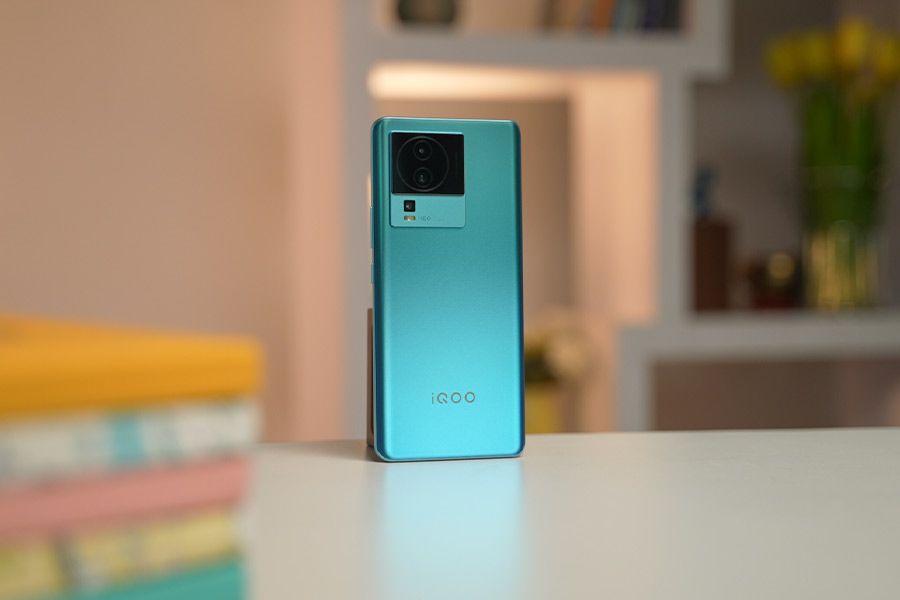
For starters, the Neo 7 has an all-plastic build material which doesn’t feel that nice on my hands; even though iQOO has done an A1 job with the weight distribution. And like basically every other iQOO phone ever, this one lacks an official IP rating as well. At least the SIM tray has been wrapped with a rubber ring so there’s some reassurance I guess.
Display
- 6.78-inches FHD E4 AMOLED panel
- 120/360Hz refresh/touch sampling rate
- 800 nits (HBM), 1300 nits (HDR) brightness
- Schott Xensation glass protection
Like the design, its display is effectively the same as its predecessor too. But I must say that isn’t necessarily a bad thing in this case. You’re looking at a slightly bigger 6.78” AMOLED display with all the goodies like a smooth 120Hz refresh rate, a speedy 360Hz touch sampling rate, and more.
I couldn’t find it in any of iQOO’s official resources but I think the company has also used the same E4 luminescent material on the Neo 7 that peaks at 1300 nits in certain HDR playbacks. Or 800 nits under auto brightness mode.

That’s not as bright compared to something like the Redmi Note 12 Pro+—for example—but I can read stuff off of this screen even under direct sunlight just fine. The factory color calibration was a bit on the warm side in our unit but adjusting it is literally as easy as dragging the temperature slider inside the settings.
And iQOO has also got you covered for a rich viewing experience on Netflix and other streaming with HDR10+ certification. But bringing the Note 12 Pro+ into the mix once again—which can even play Dolby Vision-mastered videos by the way—the Neo 7 misses out on some of those fine highlights and color details in certain scenarios. This is really, really not that big a deal but it is what it is.
Audio
- Stereo speakers with Hi-Res Audio
- No 3.5mm headphone jack
Now, although I can easily look past this pesky little thing, I’m afraid the iQOO Neo 7’s speakers are just… not that nice. The phone thoroughly struggles to maintain proper detail and clarity in either low, mid, or high frequencies and the overall audio also sounds muffled at full volume. That’s not something I expected from a gaming phone. Despite all this, I’ve had no trouble making phone calls on this thing.
Cameras
- Triple camera setup at the back
- (64MP primary, 2MP depth, 2MP macro)
- 16MP selfie camera (hole-punch cutout)
Well, that brings us to the cameras then. And right off the bat—yes—iQOO has replaced the 8MP ultrawide sensor in favor of a 2MP depth camera here, which sucks. There’s simply no nice way to put it. I am someone who is into street and landscape photography so the wider field of view of an ultrawide camera is super useful for me.
Daytime Images
But on the bright side, iQOO Neo 7’s 64MP ISOCELL GW3 main sensor actually takes really good photos for its class.
And I think most people are going to like its image processing too. That punchy contrast mixed with playful colors and occasionally nicer exposure looks quite eye-catching, to be honest.
Lowlight Images
Its lowlight shots are equally good. The onboard OIS makes sure you get sharp and well-detailed photos, while there’s also good contrast level and highlight control overall.
iQOO does tend to lift the exposure evenly across the image though, making them look superficial. I thought turning on the night mode would fix this—but apparently not. So hopefully this gets sorted out with a future update.
Portrait, Selfie Images
Anyway, I’m equally fond of how iQOO handles human subjects. Like when it comes to portraits, the phone digitally zooms in on the subject, mimicking a telephoto camera.
And as you can see from these samples, it delivers noticeably more pleasing photos with great background separation.
The subject’s skin tone isn’t the most accurate from either phone, but the Neo 7’s portraits still manage to stand out. It’s all the same with selfies as well.
Videography
Moving on to videos, iQOO lets you record at up to 4K 60 fps. But since OIS doesn’t work here, you’re gonna have to go 4K 30 fps or lower for steadier footages.
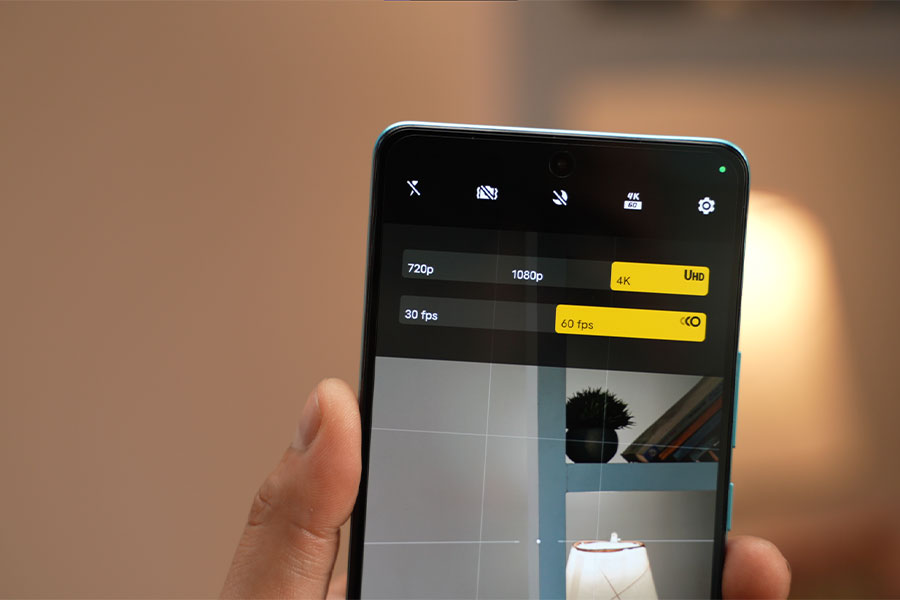
And yeah, iQOO has greatly combined optical stabilization with a little bit of cropping-in magic to give you quite stable videos. Even exposure handling is pretty good here but you will notice jitters every now and then. While there’s also a shade of warm color tone in general.
But unlike the main camera, you’re still stuck with 1080p 30 fps videos from the front camera. Its field of view is fine but iQOO could’ve done a better job with facial skin tone, as well as dynamic range and stabilization.
Battery
- 5000mAh with 120W fast charging
And as for battery, it’s fantastic news. The iQOO Neo 7 has been consistently giving me around 7 to 8 hours of screen time even under a fairly stressful usage pattern consisting of a lot of web browsing, mixed with taking photos and videos, and a couple of gaming sessions sprinkled in every now and then.
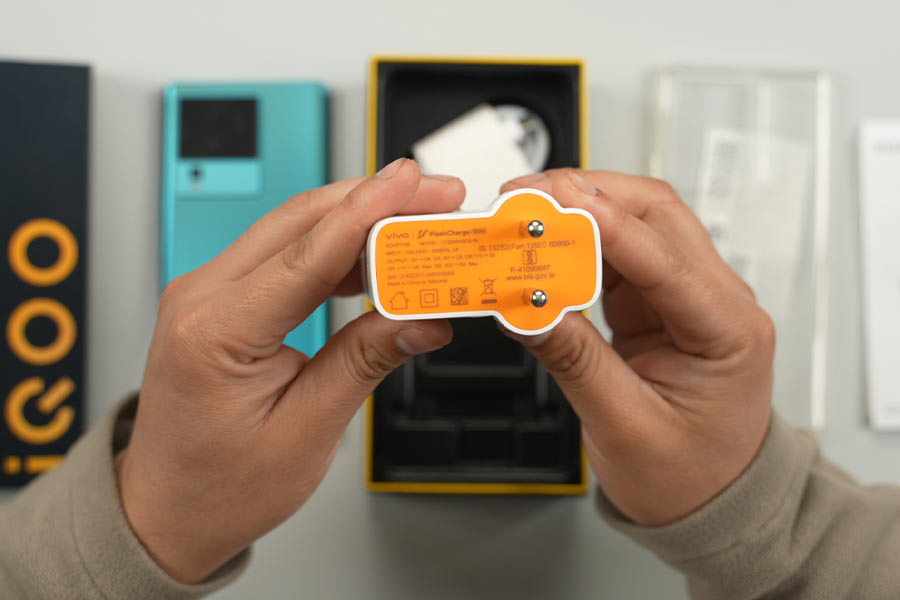
Whereas the upgraded 120W fast charging is just another way iQOO impresses with this phone, which gets you a complete refill in just 24 minutes. But you should know that you will need to enable the “fast charging” option in the settings for this.
iQOO Neo 7 Review: Conclusion
That was all for my full review of the iQOO Neo 7. It pretty much goes without saying that this is easily the best gaming phone you could buy in the midrange segment. But… that was obvious just by looking at its spec sheet, right?
I also thought a great gaming experience was all I was gonna get with the iQOO Neo 7 but boy was l wrong!
Instead, what really surprised me here is just how well-balanced it is in other aspects like the battery, display, and cameras too. So if you’re shopping for a reliable phone in general—and not just a gaming phone under INR 30,000—the iQOO Neo 7 is genuinely a good option you can consider.
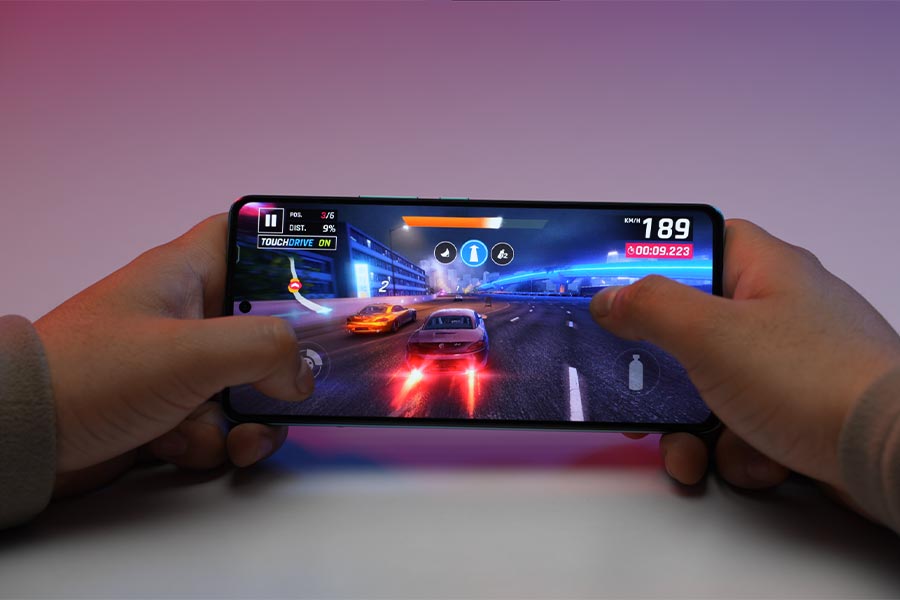
Having said that, I believe iQOO could’ve made it 10/10 by including an ultrawide sensor and a good set of stereo speakers. And if you look at the competition, we’re going to see some exciting midrange phones in a month or two. Like the Xiaomi 13 Lite, OnePlus Nord 3, and Samsung Galaxy A54.
These phones might not go toe-to-toe with iQOO in terms of performance, but they could still deliver better value overall. Thus making Neo 7’s appeal just a bit weaker. So I really think iQOO should’ve included an ultrawide camera and good speakers on this phone. Whose component cost really shouldn’t have cost iQOO that much! Yeah, that’s definitely a missed opportunity here.
- Watch our video review of iQOO Neo 7
iQOO Neo 7 Review: Pros and Cons
Pros:
- Almost flagship-level gaming performance
- Nice 120Hz AMOLED display
- 64MP main camera takes great photos
- A+ battery endurance
- Speedy 120W fast charging
Cons:
- Skips an ultrawide camera
- Plastic back, no IP rating
- Stereo speakers don’t sound that good
- Lowlight photography not as optimized






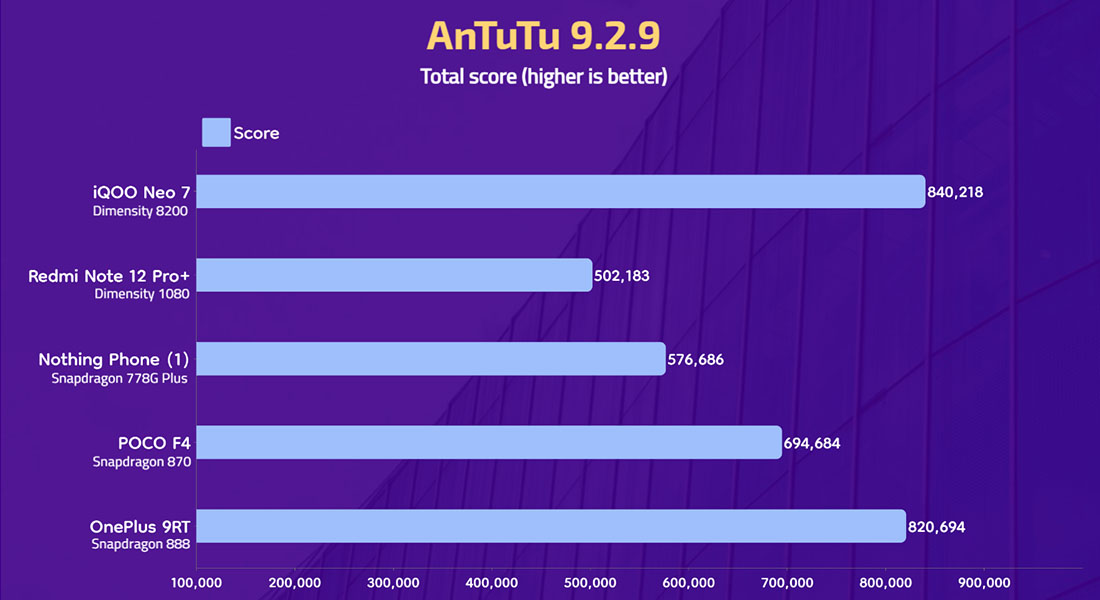
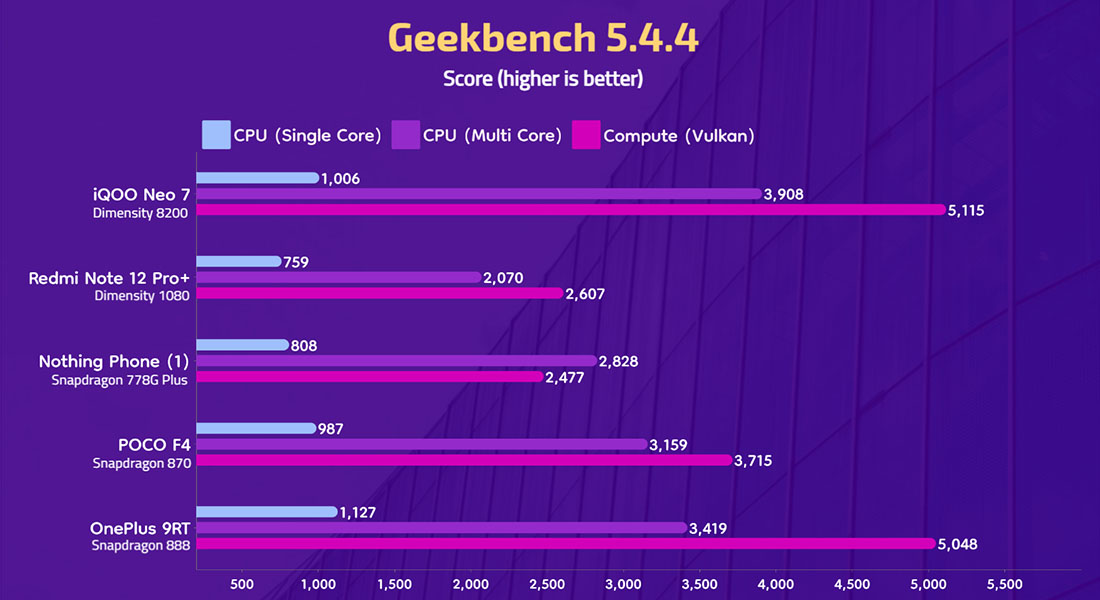

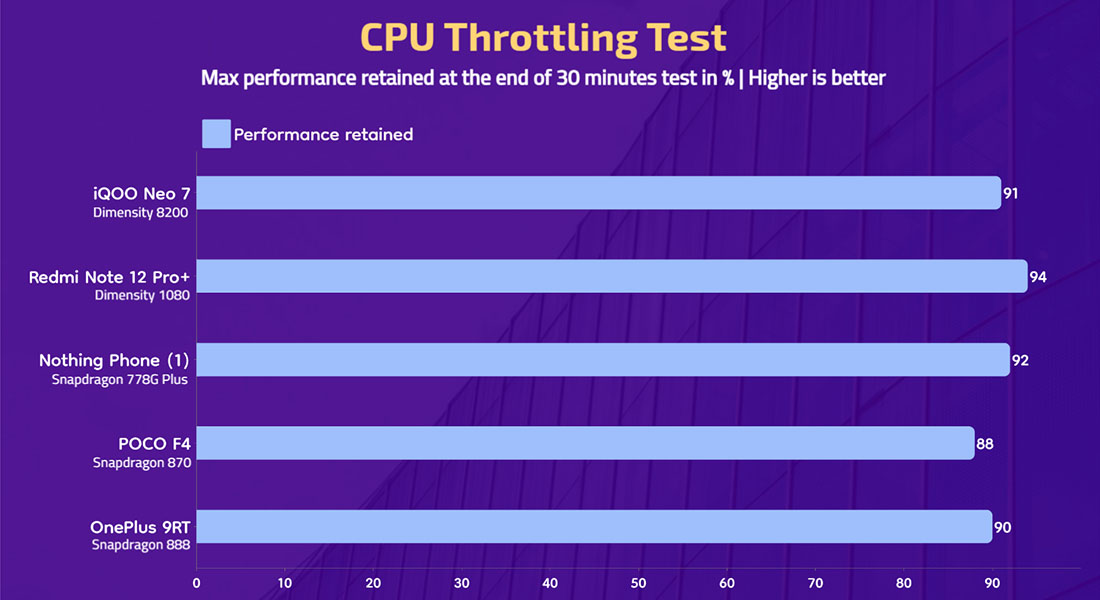

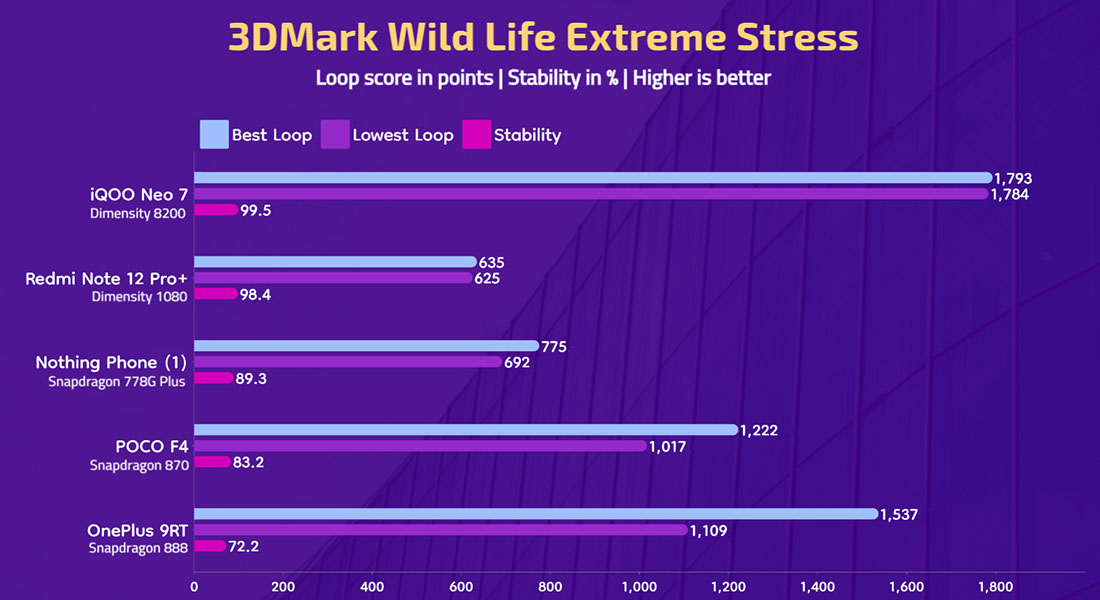
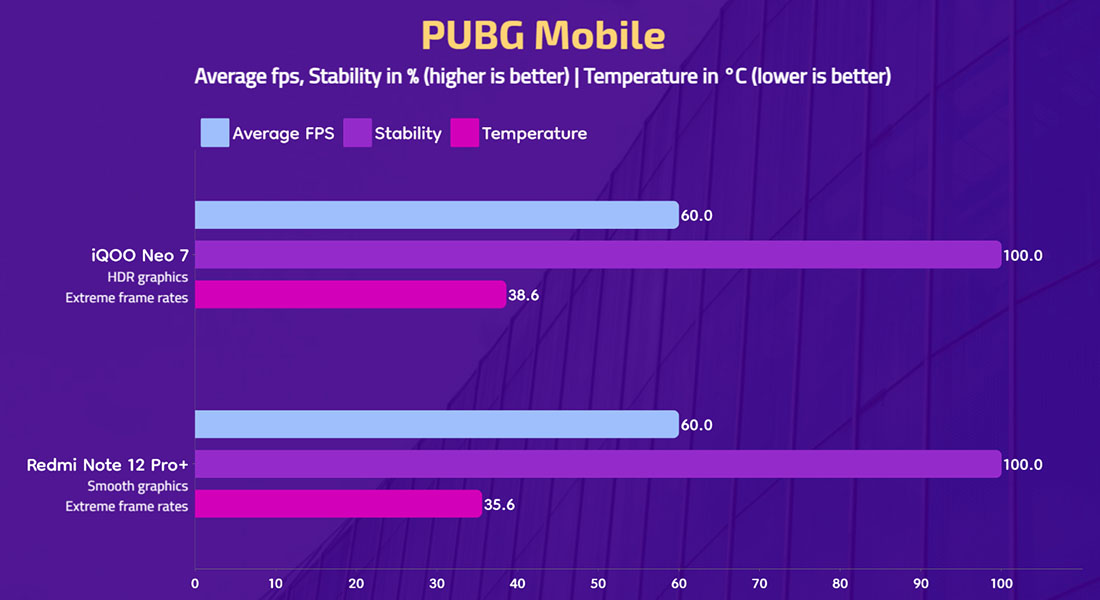
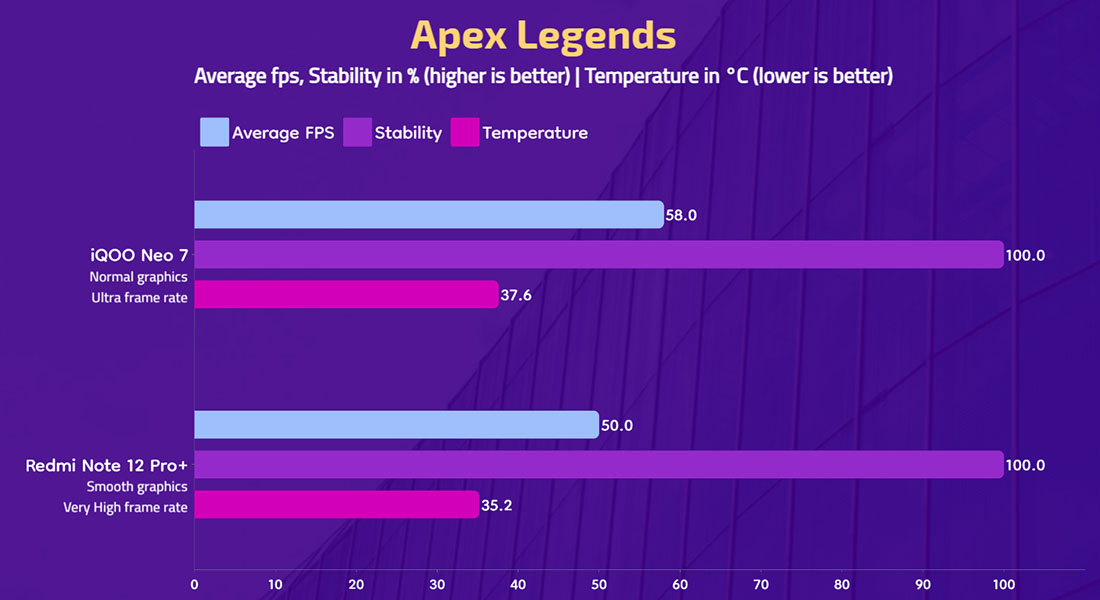


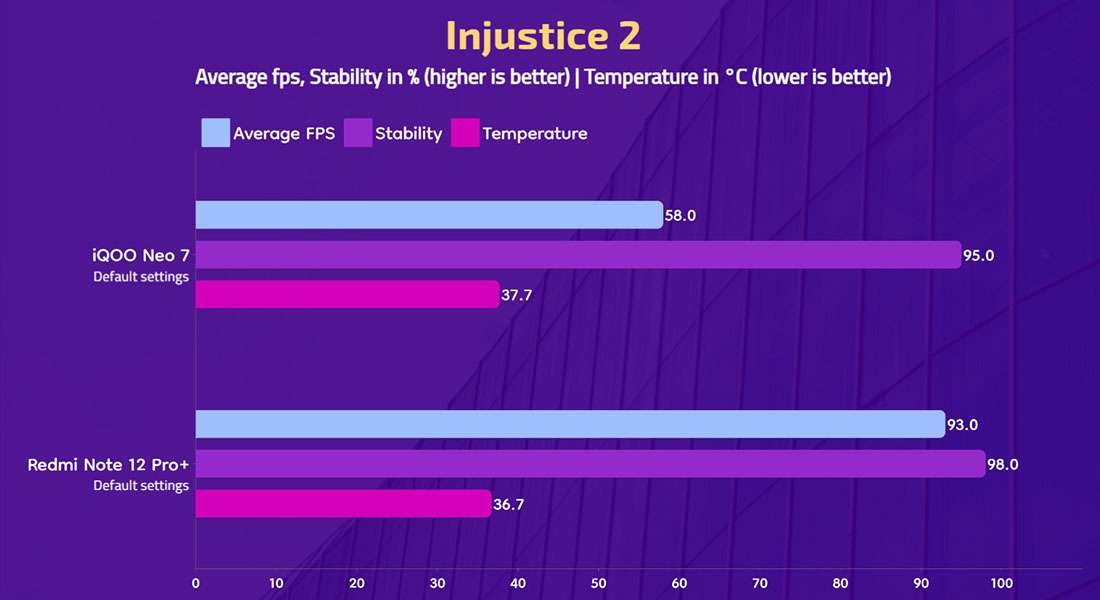
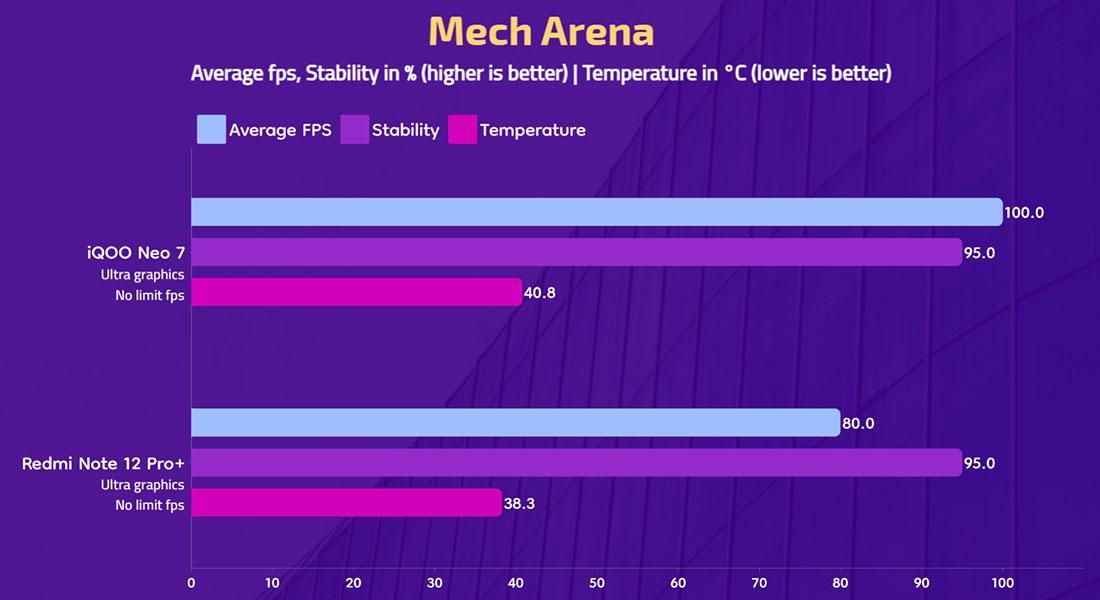



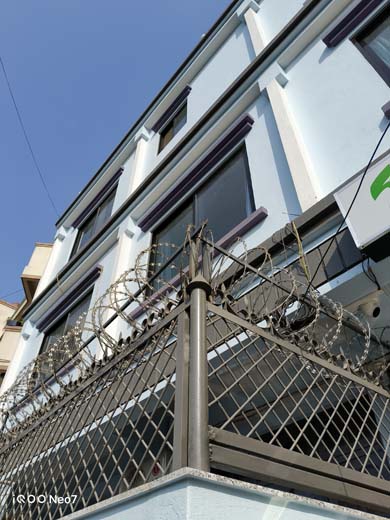


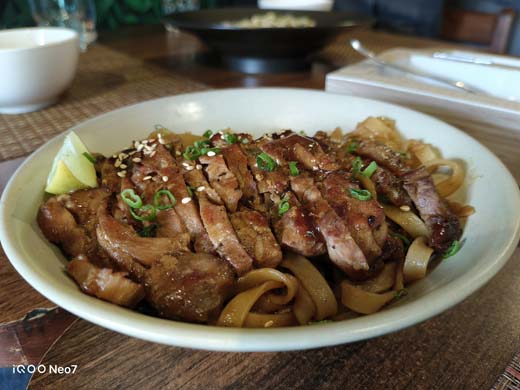






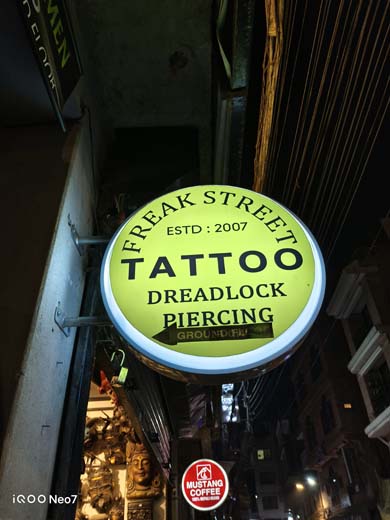






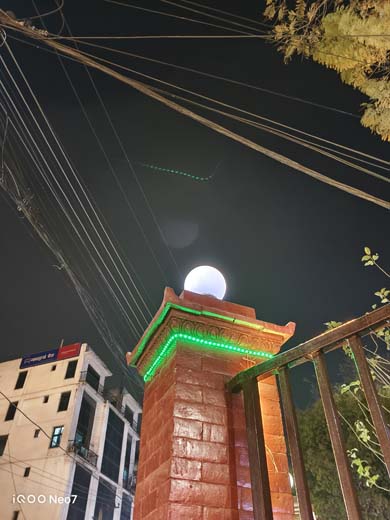

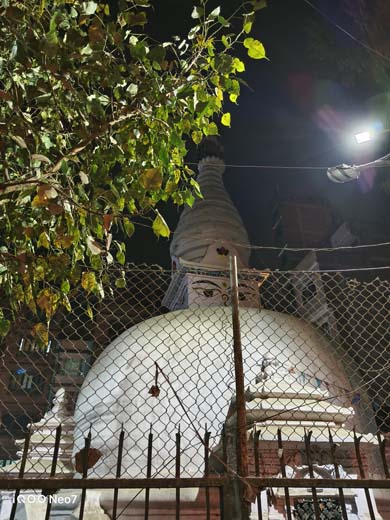
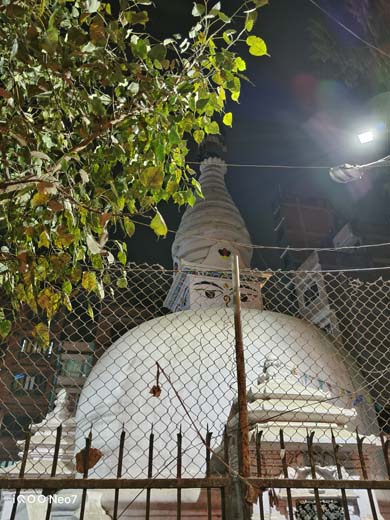
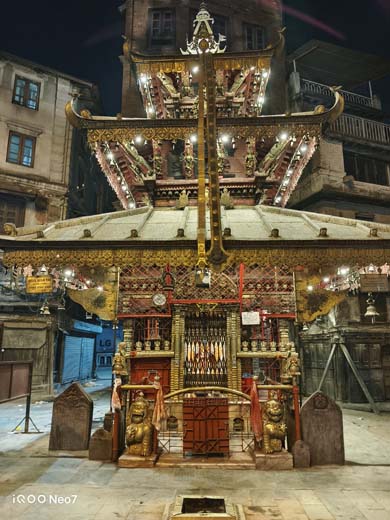
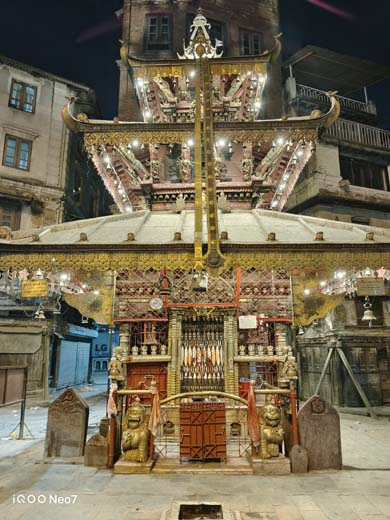





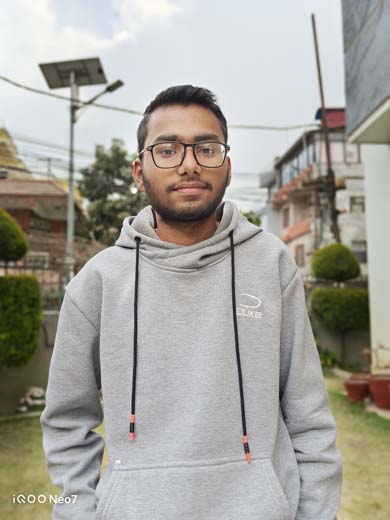







![Best Gaming Laptops in Nepal Under Rs. 250,000 (रु 2.5 Lakhs) [2025] Best Gaming Laptops Under 2.5 lakhs in Nepal [Feb 2025 Update]](https://cdn.gadgetbytenepal.com/wp-content/uploads/2025/02/Best-Gaming-Laptops-Under-2.5-lakhs-in-Nepal-Feb-2025-Update.jpg)
![Best Gaming Laptops in Nepal Under Rs. 120,000 (रु 1.2 Lakhs) [2025] Best Budget Gaming Laptops Under Rs 120000 in Nepal 2025 Update](https://cdn.gadgetbytenepal.com/wp-content/uploads/2025/05/Best-Budget-Gaming-Laptops-Under-Rs-120000-in-Nepal-2024-Update.jpg)
![Best Laptops Under Rs. 80,000 in Nepal [2025] Best Laptops Under 80,000 in Nepal March 2025 Update](https://cdn.gadgetbytenepal.com/wp-content/uploads/2025/03/Best-Laptops-Under-80000-in-Nepal-March-2025-Update.jpg)
![Best Gaming Laptops in Nepal Under Rs. 200,000 (रु 2 Lakhs) [2025] Best gaming lapotp under 2 lakhs Nepal Feb 2025](https://cdn.gadgetbytenepal.com/wp-content/uploads/2025/01/Best-Gaming-Laptops-Under-2-Lakh-Nepal-Feb-2025-Update.jpg)

![Best Mobile Phones Under Rs. 15,000 in Nepal [Updated 2025] Best Phones Under 15000 in Nepal 2024 Budget Smartphones Cheap Affordable](https://cdn.gadgetbytenepal.com/wp-content/uploads/2024/03/Best-Phones-Under-15000-in-Nepal-2024.jpg)
![Best Mobile Phones Under Rs. 20,000 in Nepal [Updated] Best Mobile Phones Under NPR 20000 in Nepal 2023 Updated Samsung Xiaomi Redmi POCO Realme Narzo Benco](https://cdn.gadgetbytenepal.com/wp-content/uploads/2024/01/Best-Phones-Under-20000-in-Nepal-2024.jpg)
![Best Mobile Phones Under Rs. 30,000 in Nepal [Updated 2025] Best Phones Under 30000 in Nepal](https://cdn.gadgetbytenepal.com/wp-content/uploads/2025/01/Best-Phones-Under-30000-in-Nepal.jpg)
![Best Mobile Phones Under Rs. 40,000 in Nepal [Updated 2025] Best Phones Under 40000 in Nepal 2024 Smartphones Mobile Midrange](https://cdn.gadgetbytenepal.com/wp-content/uploads/2024/02/Best-Phones-Under-40000-in-Nepal-2024.jpg)
![Best Mobile Phones Under Rs. 50,000 in Nepal [Updated 2025] Best Phones Under 50000 in Nepal](https://cdn.gadgetbytenepal.com/wp-content/uploads/2025/01/Best-Phones-Under-50000-in-Nepal.jpg)
![Best Flagship Smartphones To Buy In Nepal [Updated] Best flagship phone 2025](https://cdn.gadgetbytenepal.com/wp-content/uploads/2024/07/Best-Flagship-Phones-who-is-it-ft-1.jpg)